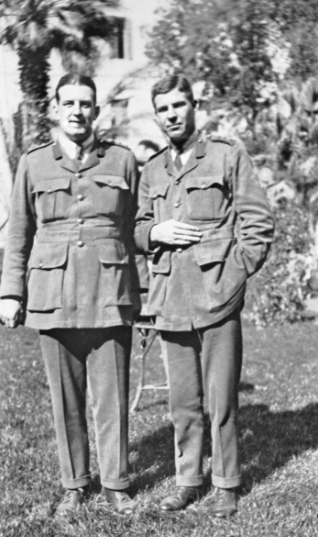HENRY GEORGE LEAHY (pictured right)
HG Leahy was one of a kind.
He had been born at Thargomindah, 1000 kilometres west of Brisbane in 1888 and he was educated at St Joseph’s College, Nudgee, in Brisbane.
Just after the death of his father, John Leahy (1854-1909), Speaker of the Queensland Legislative Assembly, HG Leahy began medical studies at Melbourne University and represented for a number of seasons as full back in the Victorian Rugby side. In the 1911-12 cricket season, he played two games in 1st Grade for Melbourne University against Melbourne, when he was bowled for 12, and against North Melbourne when he didn’t bat.
In 1913, he continued his medical studies at Sydney University and threw himself into University life with some relish. He played competitive Billiards, was a 1st Grade baseballer and was Boxing Secretary of the Athletics Club. The gold medal that he won as welter weight champion in 1914 was later stolen from his home in Bridge Road Glebe and was, apparently, never returned. In the intervarsity boxing team of that year he knocked out his opponent from Melbourne.
He had moved from rural Queensland to Brisbane to Melbourne and then Sydney before he represented SUCC. In 1914-15, he is listed as playing in 2nd and 3rd Grades and it is known that he played 2 innings for 31 runs in 2nd Grade.
In round 1 of the 1915-16 season, HG Leahy was selected in a vastly under-strength University 1st Grade side to play Waverley at University Oval (1st Grade cap no143). Many undergraduates had enlisted and the Club’s golden era was behind it. 1st Grade had been Premiers in 1913-14 but in 1915-16, only CR Campling remained from that great side. Nevertheless, University’s first day of the new season was promising. Les Best’s 69 ensured that University would post a competitive total and HG Leahy, coming in at number 8, “batted confidently and crisply” before being caught from Ward for 26. Stubborn partnerships on the second day took Waverley past the University total six down.
For Waverley, 19 year old Norman Callaway made 61, the first innings in a productive 1st Grade season that produced 705 runs at 58.5. In February 1915, he had made his debut for NSW against Queensland at the SCG. Queensland was disposed of for 137 but NSW was 3 for 17 when Callaway joined University’s Frank Farrer. At stumps Callaway was 125 not out and on the next day he went on to a scintillating 207 in 214 minutes with 26 fours on a slow outfield. This was to be his only 1st class match and the last interstate match before the Great War caused the cancellation of games. At the time, he was only the second to score a double century on 1st class debut. Later in the 1915-16 season, he enlisted and he was killed at the Second Battle of Bullencourt on 3 May 1917. He has no known grave. He was the first of only three NSW cricketers killed in the Great War. Dr Gother Clarke died on 12 October 1917 and the Australian fast bowler ‘Tibby’ Cotter on 31 October 1917.
HG Leahy enlisted in March 1916 just after graduation at about the same time as Calloway. But Leahy was aged 28, a medical doctor promoted to Major who served in Egypt, Palestine and Beersheba. He returned to Sydney in 1920 after post graduate studies in Surgery in London after the Armistice.
On the card detailing his war service for the Sydney University Union records, Dr Leahy wrote emphatically: “No wounds. No ailments. No regrets!”
He set up practice in Macquarie Street in 1921 but persistent heart trouble forced him to less intense practice at Barmedman by 1939. The young surgeon played golf and contributed pieces for ‘The Bulletin’ and ‘Smith’s Weekly’.
But he had apparently played his last cricket game in 1916 and he died at Temora on 1 April 1940, aged only 52.
He had played once for University in 1st Grade. One innings for 26. And he crossed paths briefly with the tragic Norman Calloway.
There are lingering questions:
1. Why did he start Medicine at Melbourne University and then transfer to Sydney?
2. Does he have any descendants? He was the only son but he had four sisters.
Acknowledgements to Max Bonnell.
James Rodgers

